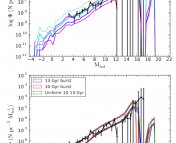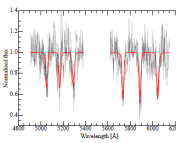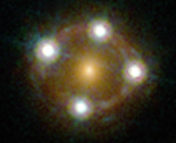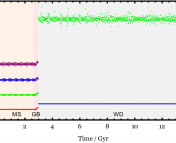Authors: Peter McGill, Jay Anderson, Stefano Casertano, Kailash C. Sahu, Pierre Bergeron, Simon Blouin, Patrick Dufour, Leigh C. Smith, N. Wyn Evans, Vasily Belokurov, Richard L. Smart, Andrea Bellini, Annalisa Calamida, Martin Dominik, Noé Kains, Jonas Klüter, Martin Bo Nielsen, Joachim Wambsganss
First Author’s Institution: Institute of Astronomy, University of Cambridge & Department of Astronomy and Astrophysics, University of California, Santa Cruz
Status: Published open access in MNRAS
Our Sun, like most stars, will eventually become a white dwarf, a very dense stellar remnant where gravity is balanced by electron degeneracy pressure. No two electrons can occupy the same spin and energy state in the same region, as described by the Pauli exclusion principle. This means that for very dense materials, electrons are pushed to higher and higher energy levels, moving at high speeds and creating outward pressure from the object’s center. As long as such an object stays below ~1.4 times the mass of the Sun, this pressure can support the star against its own gravity.
Interestingly, the more massive a white dwarf is, the smaller it is. When purely considering the balance of electron degeneracy pressure and gravity, a white dwarf’s radius should be inversely proportional to the cube root of its mass (R ~ M-⅓). But, real objects can’t be quite that simple. This mass-radius relation (MRR) can vary based on other properties of the star like its composition, non-degenerate layers, and finite temperatures. Prior work has primarily studied white dwarfs in eclipsing binary systems, where mass and radius can both be measured. Today’s paper tests the MRR for a single, isolated white dwarf for the first time with astrometric microlensing.
When Stars Align
Microlensing events happen when a massive “lens” object passes almost exactly in front of some luminous “source” object, temporarily magnifying and warping the image we see of the source. In addition to seeing the source appear brighter, its position also appears to shift slightly on the sky. This effect is called “astrometric microlensing,” and is demonstrated in Figure 1 below.
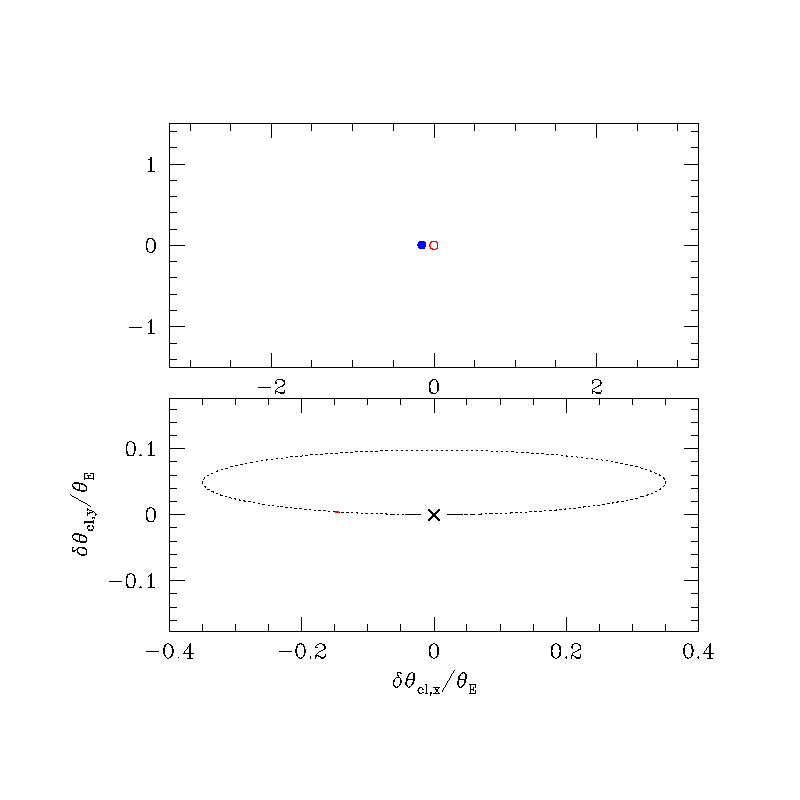
Figure 1: Animation by Scott Gaudi depicting an astrometric microlensing event in the frame of the source star. We see the yellow lens star pass very nearly in front of the source, whose true position is shown with a red empty circle. The lensing effect causes us to see two warped images of the star shown in blue, the major and minor images, which move around the lens star’s Einstein ring marked by a green circle. In astrometric microlensing, we can’t actually resolve the separate blue images, and we instead see an apparent image position indicated by the red filled circle. In the lower panel of the animation, we see how that apparent image’s position changes over time, creating an astrometric signal. (Animation credit: Scott Gaudi)
While the most common approach to detecting microlensing events is to monitor a large number of stars for random chance encounters, sometimes microlensing events can also be predicted. The event covered in today’s paper was actually predicted in 2018, based on the source and lens stars’ trajectories measured by Gaia.
The LAWD 37 Event
LAWD 37 is the second nearest white dwarf to the Sun and is the lens in this predicted microlensing event. Over a period of a year, a series of observations were taken in the anticipated event region with the Hubble Space Telescope (HST). Stacked images for 9 observation epochs are shown in Figure 2 below.
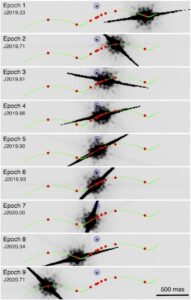
Figure 2: HST imaging throughout the microlensing event. The stars, as seen by HST, are shown in black. The green line traces the path of the lens star over time (which appears wavy due to Earth’s orbit), and the red dots mark its location during the observations. The blue circle marks the source star. The lens star is saturated, where its intense brightness has caused some overflow of charge into neighboring pixels. (Figure 2 in the paper)
The original prediction of the microlensing event estimated an astrometric shift of about 2.8 milli-arcseconds, which is far too small to see by eye in the figure but large enough to measure with precise astrometry. To determine whether the tiny shifts measured were actually the result of astrometric microlensing, the authors compared fits to four different models, with and without an astrometric microlensing signal and with and without correlated noise.
The Mass-Radius Relation
The model including both astrometric microlensing deflection and correlated noise is the best fit to the data, though correlated noise alone performed better than deflection alone. Further monitoring of the stars to even more precisely measure the source’s motion could rule out the correlated noise alone model, which infers a source star proper motion significantly faster than that initially measured by Gaia.
The best-fit model with astrometric deflection and correlated noise results in a lens mass of 0.56 ± 0.08 solar masses. Atmospheric model fitting for LAWD 37 calculates a radius of 0.0127 ± 0.0003 solar radii, which through a theoretical MRR, gives a mass of 0.57 ± 0.01 solar masses. The results support existing models for white dwarf evolution, in great agreement with both the theoretical MRR and expected cooling rates.
This work was only the third time that a predicted astrometric microlensing event has been detected and provides lessons for the future of such follow-up observations. Because of LAWD 37’s high proper motion, astronomers have already predicted more of its lensing events in the next couple of decades, which will help refine measurements of the white dwarf’s mass.
Edited by Graham Doskoch
Featured image credit: Adapted by Macy Huston from NASA, ESA, Peter McGill (UC Santa Cruz, IoA), Kailash Sahu (STScI); Original Image Processing: Joseph DePasquale (STScI)

